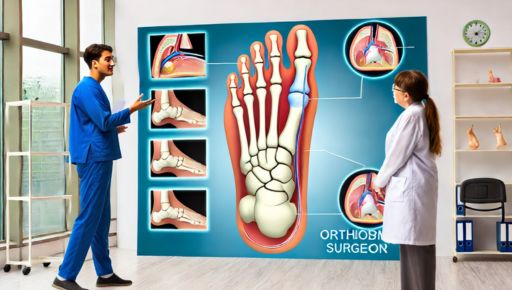
Bunions can cause significant discomfort. They may even disrupt daily activities. Orthopedic surgeons play a key role in treating them. These specialists use their skills to relieve pain and improve foot function. Recovery often involves a tailored plan that includes routine care that is more effective after treatment. For those seeking immediate help, ft worth urgent care can provide timely support. Let’s explore how orthopedic surgeons work to address bunions.
Understanding Bunions
A bunion is a bump that forms at the base of the big toe. It occurs when the bones in the front part of the foot move out of place. This causes the tip of the big toe to get pulled toward the smaller toes. This shift makes the joint at the base of the big toe stick out and enlarge. The National Institute of Arthritis and Musculoskeletal and Skin Diseases explains that factors like tight shoes, foot stress, and arthritis can contribute to bunion formation. Genetics also play a role, making some more likely to get bunions than others.
Role of Orthopedic Surgeons
Orthopedic surgeons specialize in the musculoskeletal system. They focus on diagnosing, treating, and preventing conditions related to bones, joints, ligaments, tendons, and muscles. When it comes to bunions, they employ various methods to alleviate symptoms and improve foot health. Here are three primary ways they assist in bunion treatment:
- Diagnosis: Surgeons assess the severity and underlying causes of the bunion.
- Non-surgical treatments: Use of padding, taping, and shoe inserts to relieve pain.
- Surgical options: When necessary, surgery can correct the bone alignment.
Treatment Options
Orthopedic surgeons offer both non-surgical and surgical treatments. The choice depends on the bunion’s severity and individual needs. Here’s a comparison of the two approaches:
| Treatment Type | Methods | Benefits | Considerations |
| Non-Surgical | PaddingCustom orthoticsFoot exercises | Less invasiveNo recovery time | May not resolve the issueDepends on bunion severity |
| Surgical | BunionectomyOsteotomyArthrodesis | Corrects bone alignmentLong-term relief | Requires recovery timePotential surgical risks |
Post-Treatment and Recovery
After treatment, whether surgical or non-surgical, recovery involves specific care routines. These may include wearing comfortable footwear, using protective padding, and practicing foot exercises. Routine check-ups with an orthopedic specialist ensure proper healing and prevent recurrence. The American Academy of Orthopaedic Surgeons recommends staying informed and proactive in managing foot health to maintain the benefits of treatment.
Conclusion
Orthopedic surgeons provide crucial expertise in treating bunions. With a range of options for relief and correction, they guide patients to better foot health. It’s essential to consult with a specialist to determine the most appropriate approach for individual needs. Whether through non-surgical means or surgical intervention, taking steps towards treatment can significantly enhance comfort and mobility, making daily activities more enjoyable and pain-free.














